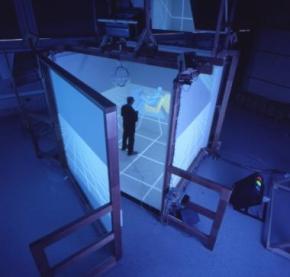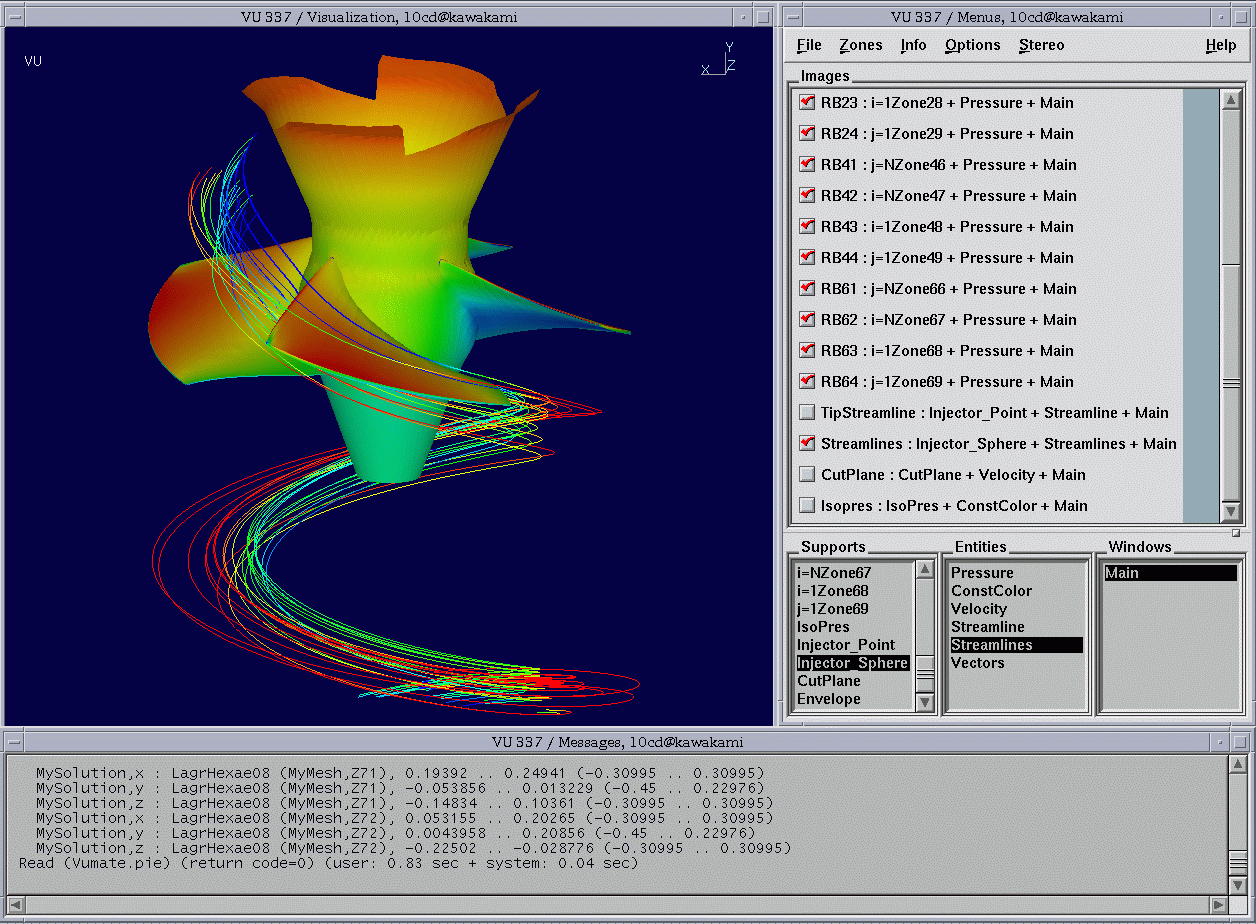|
When numerical simulations of turbulent flow have been performed, the major task of post-processing (investigating) the results begin. The more complex flow and geometry, the more complex it is to investigate. The flow in water turbines is indeed very complex and the three-dimensionality of the geometry makes it hard to investigate on a flat screen. Modern commercial post-processors, such as Ensight and Tecplot, are very good at representing the three-dimensionality on a flat screen using perspective view, lighting and shading that creates a virtual reality. Some commercial post-processors even ignore the flatness of the screen and let the model "float" in space in front of the user, using sophisticated graphics cards and LCD shutter glasses. However, when it comes to user interaction and virtual reality immersion, this kind of system is not sufficient. To go beyond the limits of these systems, large-screen Immersadesks and Cave Automatic Virtual Environment (CAVE) systems can be used. In these environments a full 3D picture of the model can be viewed and tracking of the user movements can be included. The same thing would of course be possible on a workstation flat-screen, but the limitations of a small screen are too big to make it useful. The results of computations of the flow in water turbines, which are performed in this work, are investigated both on flat-screen workstations and in a CAVE environment. The CAVE visualization is performed in a collaboration with Chalmers Medialab and people at CERCA. The 3D-Cube that is used for these visualizations has five walls (four walls and a floor) with 3D graphics, a Polhemus 3space Fastrak Longranger electromagnetic tracking system, a complete 3D sound system and a number of different input devices. This is what it may look like in action:

More information on the 3D-Cube configuration at Chalmers Medialab can be found at the 3D-Cube homepage. To be able to investigate the results from computational fluid dynamics in the 3D-Cube, a close collaboration with people at CERCA was established during 2000. They have developed a configurable visualization software tool for the display and analysis of numerical solutions. The software is called Vu and it is available on computers of various sizes, from laptops using Linux to virtual reality immersion environments (CAVE, ImmersaDesk, Reality Center, etc.), on all Unix platforms, including Linux. Vu is a powerful tool that is capable of all the above-mentioned post-processor features. A Vu workstation session may look like the following Kaplan water turbine runner visualization: The main benefit of visualizing in virtual reality immersion environments is the tracking of the user head and hand movements. The projection of the model is affected by the head movements so that it really feels like the model is hanging in the air right in front of you. The tracking of the hand movements makes it easy to interactively move streamline emitters, etc., with six degrees of freedom. One of the great advantages that has been found when using Vu in the CAVE environment is that it is much easier to investigate small details in large models. The Kaplan water turbine runner computations of this work include the tip clearance between the runner blade tip and the shroud. The width of this clearance is 0.1% of the radius of the runner blade. It is very difficult to place a streamline emitter inside this clearance when visualizing on a workstation. However, in the CAVE environment it is very easy. The powerful interactivity of Vu in the CAVE environment makes it extremely useful.
This page should be part
of a frames system. If it
isn´t and you´re using a
browser capable of
handling frames (eg
Netscape 2.0, Explorer
3.0 or higher) click on...: |
